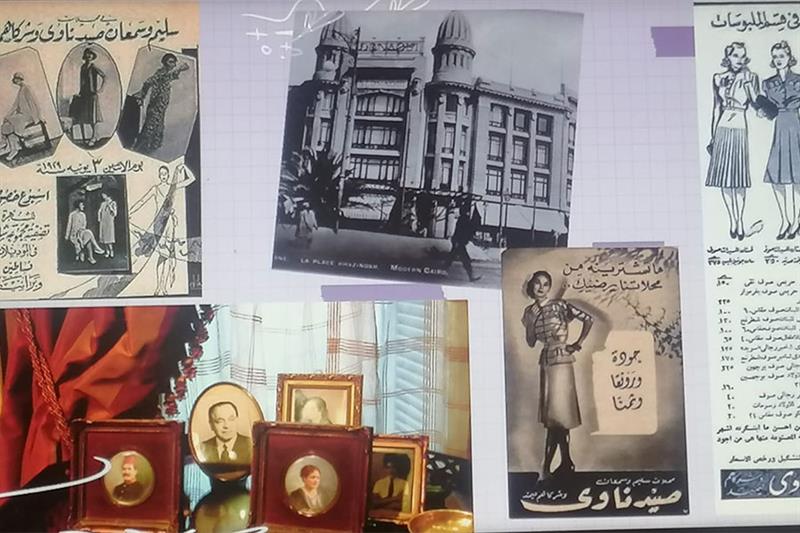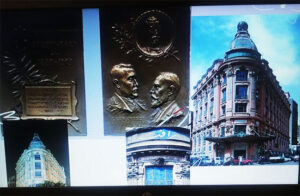Have you ever wondered what it truly means to connect with the heritage of a bustling city like Cairo?
Introducing the Museum of the People
At the heart of Downtown Cairo, a fascinating initiative is taking form—the Museum of the People. This project is more than just a collection of artifacts; it represents the rich oral history and diverse narratives that bring a city to life. These stories are not only from the long-time residents of Cairo but also from foreigners who have crossed paths with this vibrant locale.
The Museum of the People is spearheaded by the ICulture association, dedicated to digital creativity and preserving heritage. The founder, Riham Arram, explains that Downtown Cairo holds a special place for many Egyptians, both locals and expats. It’s a melting pot of embassies, shops, and historical landmarks, all steeped in stories waiting to be shared and celebrated.
The Vision Behind the Initiative
The main objective of the Museum of the People is to gather narratives from diverse individuals—young and old, local and foreign. Arram emphasizes that despite the influx of globalization, technology, and modernity, the collective memory of the city’s residents remains ingrained. This initiative aims to digitize these precious stories, transforming them into an interactive and accessible digital museum rather than a conventional exhibition.
This approach resonates with many who believe that the heart of a city lies in the memories and experiences of its inhabitants. By collecting these narratives, you not only preserve history but also foster a deeper connection between people and place.
How Did It All Begin?
The inception of this initiative traces back to approximately seven months ago when Riham Arram and her partner, Heba El Saaid, began with just a couple of collaborators. Today, the team has grown to include about 10 to 15 participants, ranging in age from 15 to 70 years. Each person brings unique stories that reflect their relationship with Downtown Cairo.
Every month, they select a theme, such as architecture, fashion, literature, or art, which sets the foundation for exploration. The atmosphere during their gatherings is electric, filled with storytelling, laughter, and shared experiences as participants recount tales of the city through their lenses.
A Taste of Their Gatherings
One such enchanting gathering was recently held at the Near East Armenian Cultural Club, where participants indulged in storytelling, bringing historical figures and events to light. One story that stood out was that of Idris, whose face once graced Egyptian currency.
Idris’s story, narrated by Mohamed Kamel, details how he began as a humble gardener for the royal family and ended up immortalized on the Egyptian pound thanks to his vision of the future. This tale offers insight into the rich tapestry of Cairo’s cultural heritage, encapsulating dreams, aspirations, and the unexpected turns in life.
Why Was Downtown Cairo Dubbed the ‘Paris of the Orient’?
During the first half of the 20th century, Downtown Cairo was often referred to as the ‘Paris of the Orient.’ In a captivating presentation, Heba El-Saaid elaborated on this nickname, combining visuals and historical research to illustrate the connection.
In those times, expansions in fashion and lifestyle echoed the runways of Paris. Shops in Downtown Cairo began to mirror the latest trends coming from France, indicating a vibrant cultural exchange. Famous retail establishments like Shamla, which opened its doors in 1907, curated collections inspired by Parisian fashion, making it a destination for the city’s trendsetters.
The Role of Influential Figures
Key figures contributed to establishing this connection, such as Dawood Ads, a Jewish-Syrian merchant who innovated the way Egyptians shop. He introduced concepts like the Manifatoura (Mortgage) system and the Imsakyat Ramadan (a reminder calendar for Ramadan shopping), merging practicality with tradition in a way that resonated with locals.
Such stories frame the fabric of a city’s heritage, revealing how various cultural influences intersect to shape a community’s identity and experience.
Unraveling the Identity of Omar Effendi
Another fascinating narrative presented was that of Omar Effendi, an iconic retail store in Cairo. Originally known as Orosdi Back, the store was founded by a Hungarian army officer who made his mark in Egypt.
The renaming of the store traces back to one of its Egyptian staff members, named Omar. His exemplary character and rapport with customers led to the store being affectionately recognized by his name—Omar Effendi. This charming anecdote exemplifies how personal connections can shape cultural landmarks and reflect the inherent values of a community.
The Legacy of Batta Shoes
The Museum of the People also shed light on the rise of Batta footwear—an enterprise that revolutionized the footwear industry in Egypt and beyond. Initially known for its simple styles, Batta took a giant leap by introducing the first sports shoes in the region. The overwhelming demand for these shoes propelled them into the Guinness Records, highlighting a unique aspect of consumer culture and the value of heritage in shaping modern industry.
Through these stories, you embark on a journey that weaves together the past and present, showing how seemingly mundane narratives can carry profound cultural significance.
The Chabrawichi Perfume Fountain: A Fragrant Legacy
One of the oldest local perfume shops in Egypt, El-Chabrawichi, holds a magical place in Cairo’s history. With its intriguing mirror-shaped entrance, the store has become an iconic symbol of local craftsmanship.
Chabrawichi started with a vision of manufacturing local perfumes after he began exporting jasmine and flowers from the Dakahlia governorate. His ability to create memorable scents, such as the celebrated Talat Khamsat (Triple 5), turned his shop into a beloved destination.
Every Mother’s Day, the community would gather for a grand celebration at Chabrawichi’s home in Maadi, where he famously hosted a perfume fountain—an event that marked the continuity of tradition and community spirit.
Reviving Personal Stories
Participants in the initiative often share personal artifacts that reveal layers of heritage, similar to the items presented by Christin Francies. She brought forth clothing, silverware, and magazines owned by her mother, purchased over 40 years ago in Downtown Cairo. The remarkable thing? Despite the passage of time, these items have retained their quality, sparking nostalgia and fascinating discussions about fashion, culture, and generational shifts.
Embracing the Future of Heritage
The Museum of the People showcases how history and modernity coexist in tumultuous yet beautiful ways. The initiative also includes organizing trips to significant Downtown landmarks, encouraging participants to connect with the physical spaces tied to their stories. This interaction doesn’t just bring history to the forefront; it helps to strengthen a sense of belonging among Cairo’s diverse residents.
The Power of Oral Narratives
Oral history serves as a tool for preserving cultural identity, enriching our understanding of the past. As globalization continues to influence urban landscapes, projects like the Museum of the People serve as a reminder of the importance of roots and heritage. By sharing these narratives, you contribute to the documentation of collective memory while encouraging diversity.
This initiative is more than just a project; it’s a movement aimed at celebrating and preserving the rich tapestry of Cairo’s history. As technology helps catalyze connections, you find that the stories discussed today will inspire generations to come.
Conclusion: A Living Museum
The Museum of the People stands as a beacon of storytelling and heritage preservation in Downtown Cairo. It fosters connections that transcend time and place, allowing you to experience the city’s rich cultural landscape through the eyes of its residents.
As you think about the stories shared, consider how they shape your understanding of a place. Each tale offers a unique perspective—whether it’s about an iconic store, a revolutionary product, or an unforgettable celebration. These narratives breathe life into the streets of Cairo, reminding us that history is not merely recorded in books but lived through the experiences of individuals.
Ultimately, the Museum of the People serves as a living museum—a digital space where voices echo, memories linger, and the essence of Downtown Cairo continues to thrive. Now, wouldn’t you want to be a part of this captivating journey?


